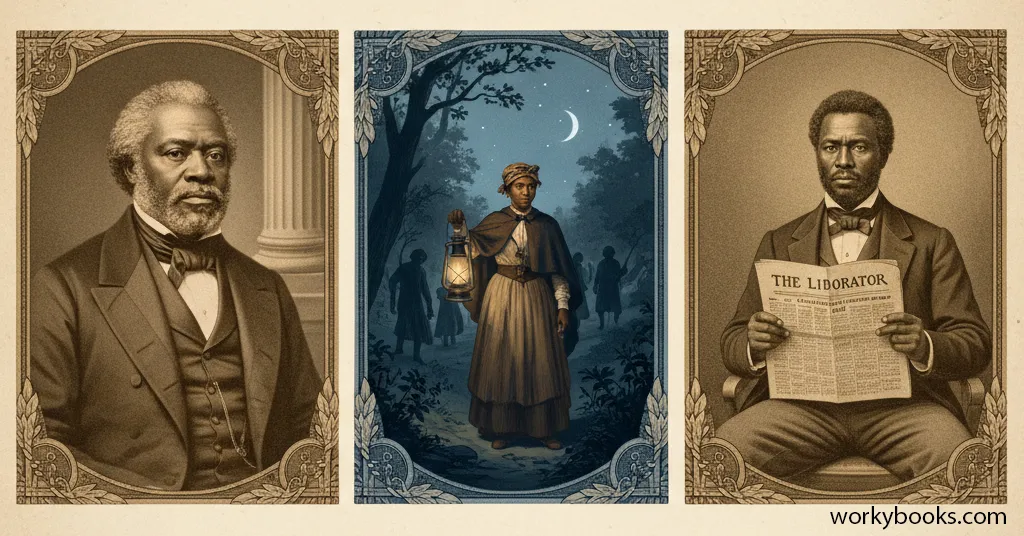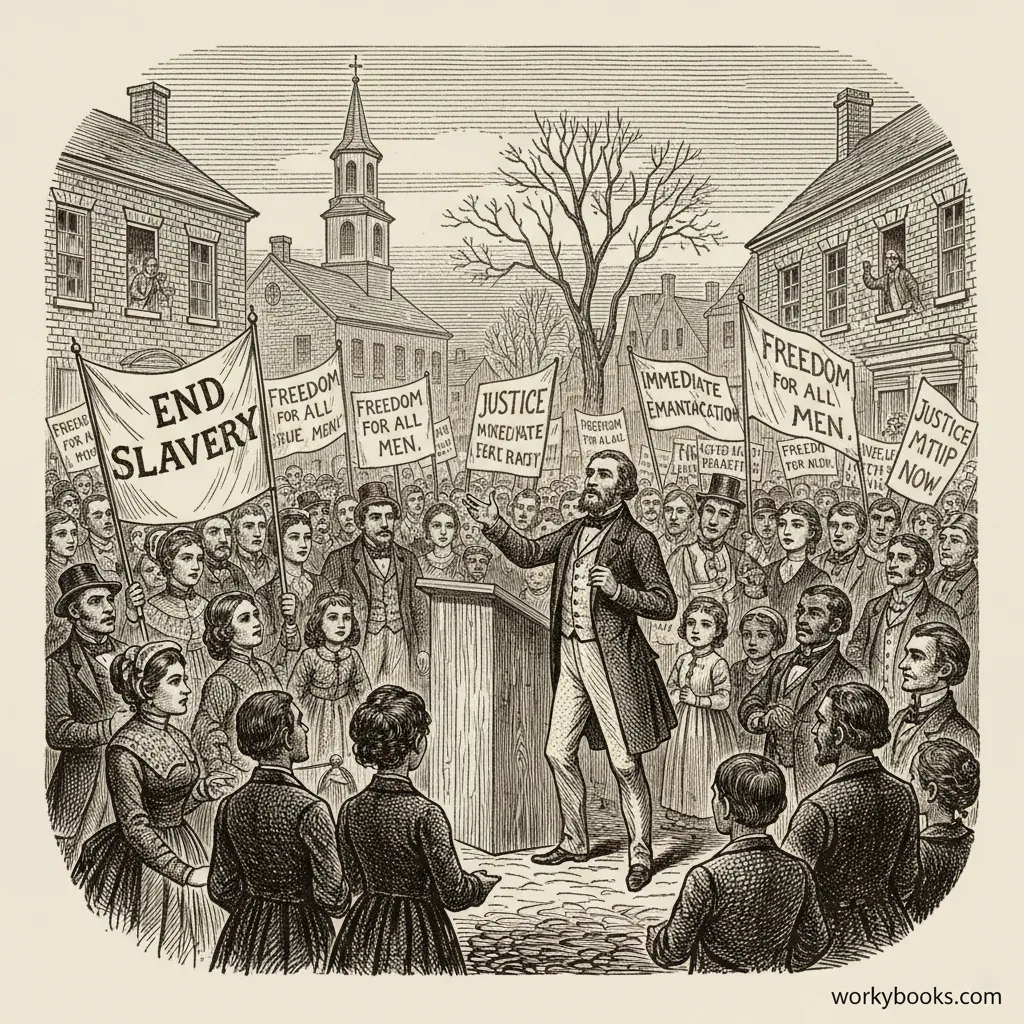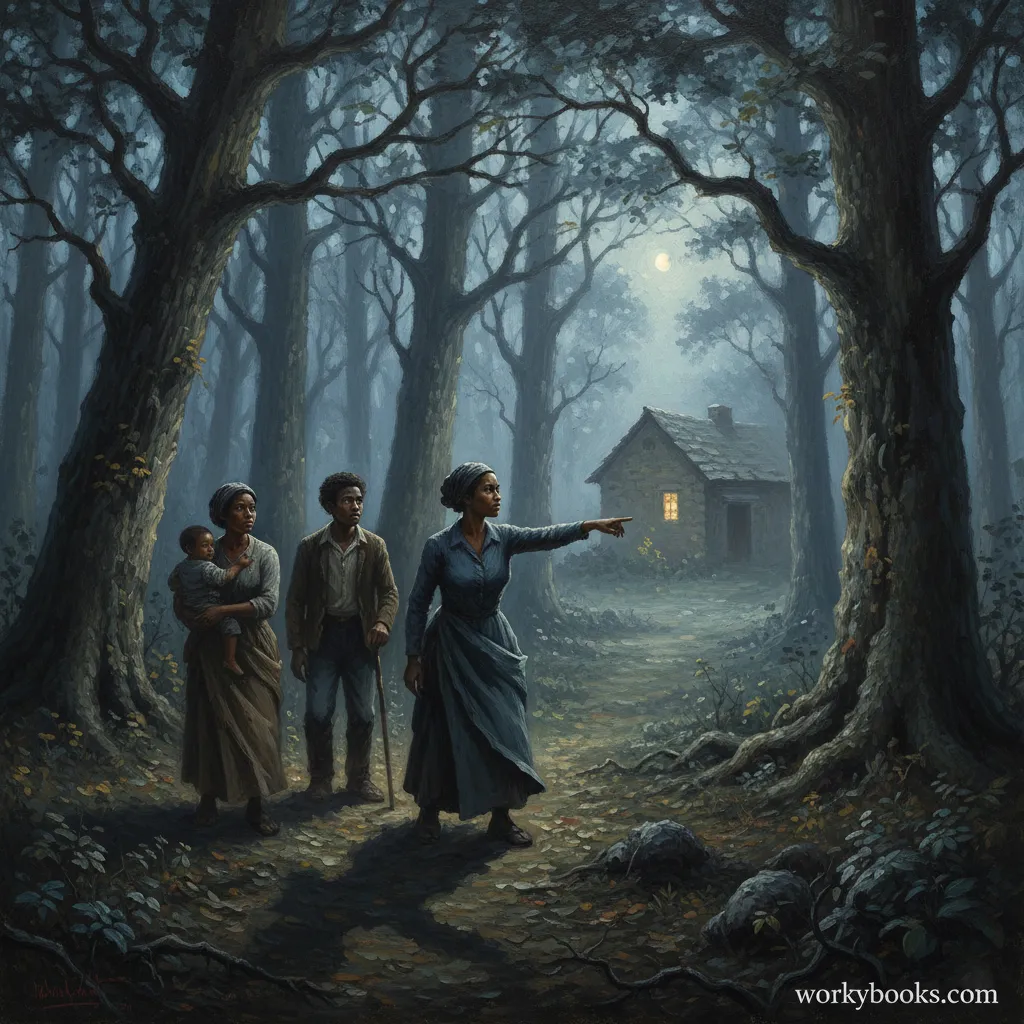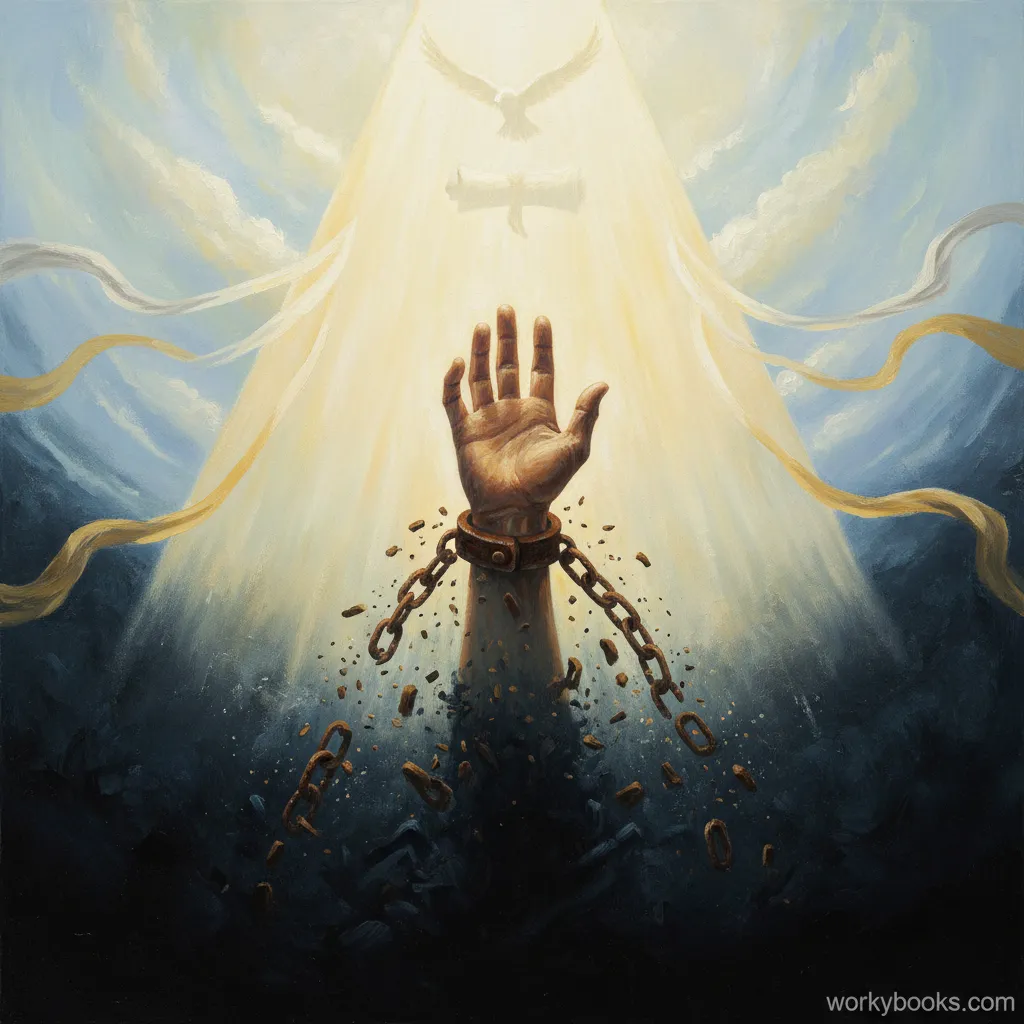Abolitionist Movement
Learn about the courageous people who fought to end slavery in the United States and their lasting impact on history.
What is the Abolitionist Movement?

The Abolitionist Movement was a social and political effort in the 19th century to end slavery in the United States. The word "abolition" means to end or stop something, so abolitionists were people who wanted to abolish, or end, slavery. This movement included people from different backgrounds who worked together to convince Americans that slavery was wrong and should be illegal.
Key Concept
The Abolitionist Movement was organized opposition to slavery that grew in strength throughout the early 1800s, ultimately leading to the Civil War and the end of slavery in the United States.
Key Abolitionist Leaders
Many courageous people led the fight against slavery. Some were formerly enslaved people who spoke about their experiences, while others were writers, speakers, and organizers who worked to change public opinion and laws.
Frederick Douglass
An escaped slave who became a powerful writer and speaker. He published an anti-slavery newspaper called The North Star and advised President Abraham Lincoln.
Harriet Tubman
Escaped slavery and became a "conductor" on the Underground Railroad, leading about 70 enslaved people to freedom. She also served as a spy during the Civil War.
William Lloyd Garrison
Published the anti-slavery newspaper The Liberator and helped found the American Anti-Slavery Society in 1833.

The Underground Railroad
The Underground Railroad was not an actual railroad with trains, but a secret network of routes and safe houses that helped enslaved African Americans escape to free states and Canada. "Conductors" like Harriet Tubman guided people along these secret paths to freedom.

The journey was dangerous, and those who helped risked severe punishment. Safe houses along the way were called "stations," and the people who hid escapees were "stationmasters." The Underground Railroad helped thousands of people find freedom before the Civil War.
Impact and Legacy
The Abolitionist Movement had a profound impact on American history. While it faced strong opposition, especially in the South, abolitionists gradually convinced more Northerners that slavery was morally wrong. Their work created deep divisions between North and South that eventually led to the Civil War.

The movement's efforts culminated in important historical events:
1863: President Abraham Lincoln issued the Emancipation Proclamation, declaring slaves in Confederate states to be free.
1865: The 13th Amendment to the U.S. Constitution was ratified, officially abolishing slavery throughout the United States.
The courage and determination of abolitionists inspired future civil rights movements and showed how ordinary people can create extraordinary change.
Abolitionist Movement Quiz
Test your knowledge about the Abolitionist Movement with this short quiz. Choose the best answer for each question.
Frequently Asked Questions
Here are answers to common questions about the Abolitionist Movement:
History Trivia
Here are some interesting facts about the Abolitionist Movement:
Powerful Words
Harriet Beecher Stowe's novel "Uncle Tom's Cabin," published in 1852, became a bestseller and turned many Northerners against slavery. When Abraham Lincoln met Stowe during the Civil War, he reportedly said, "So you're the little woman who wrote the book that started this great war."
The Liberator
William Lloyd Garrison's anti-slavery newspaper, The Liberator, was published for 35 years without missing a single issue. The final edition was published in December 1865, after slavery had been abolished.
Women's Role
Women played a crucial role in the Abolitionist Movement, organizing anti-slavery fairs, circulating petitions, and raising money. Many women who became involved in abolitionism later became leaders in the women's rights movement.


